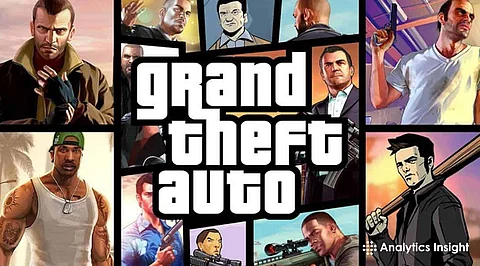

The world of Grand Theft Auto began as a controversial 2D crime game and became a cultural phenomenon beyond gaming borders. Through its transformations into the realms of technology and storytelling, the whole series has changed not only in its graphics. Thus, the evolutionary chain can be divided into three distinct eras, redefining what open-world gaming could mean.
Using top-down graphics, the early Grand Theft Auto introduced a radical new technology. It was equipped with extraordinarily advanced engines featuring very complex AI systems that made the cities feel alive; everything was integrated with "social behaviors." Players could steal any vehicle they saw and go out into the world in ways no one had experienced before. Most significantly, the radio station model set GTA's hallmark with its innovative approach to audio design - licensed music with humorous advertisements.
In this era, storytelling was sparse but effective. Players commanded silent protagonists through fairly simple crime scenarios. The structures of the missions would later morph into even more complex storylines. The earliest seed laid down by such environments and radio content that mocked American culture would eventually evolve into an incisive form of social commentary.
The GTA III revolution was when the franchise moved into three dimensions. The RenderWare engine created a 3D criminal playground into which players could plunge into a whole new light. That technical step changed the whole interaction concept with the player and the game world.
Animation systems endowed the characters with life through personality and movement. Car-vehicle physics created distinct driving experiences for different cars. Environmental design systems produced unforgettable sites that are still remembered in this day and age. The advanced audio design transformed the radio into enhanced channels that represented the time each game took the course.
The new voice protagonists have changed into players who connect a lot to their stories. The inherent characters of Tommy Vercetti in Vice City and Carl Johnson in San Andreas were such that it pushed the storyline. They tell the story with period-related nuances-in Vice City, one of the 80s Miami-inspired settings and in Los Santos, the '90s gang culture and much more. The motivations of the characters went beyond the typical crime and now included things like family and personal growth.
For that age, San Andreas was the zenith in this regard. It increased the story horizon by delving into personal history and relationships between characters. It talked about issues such as police corruption in society and neglect of cities. As the series grew, this cultural commentary became even more rich and specific.
The future with GTA V and GTA Online was all about technology and socialization set to integrate into people's lives. Massive persistent environments have now got undue details in it because of the RAGE engine. These games are set up on technical infrastructures for regular content updates for a long time even years after their actual releases.
Cloud infrastructure allows player progression through multi-platform access. They balance the endless functions of performance and ongoing hardware hit limitations. And the hooting about GTA 6 is proof that this series development keeps exciting interest beyond its time in the world. The two previous generations raised the bar on what open-world titles should achieve.
This is the turning point when the authored narrative is no longer the beginning and end of a game experience. There were also some organizing missions in GTA Online's open-ended environment, which allowed players to gain freedom. World Design environmental storytelling is quite contrary to traditional cutscenes because it creates narrative from world design into rather open storytelling environments where players are shown what it is through engagement in the different game modes. Player communities shape content direction through their engagement with different game modes.
Characters from this era are increasingly complicated. Lucia in GTA 6 is expected to follow this trend through what could be an iconic female protagonist. Multiple protagonist views in GTA V allowed the players to view one side of the world differently. This approach helps to give an opinion for all sides of the criminal life concerning more nuanced storytelling.
Grand Theft Auto's evolution is by both technological and narrative innovation. Each era is built on top of the foundation while propelling the game in new directions. The 2D games conceived the basic idea. The 3D era established the template for modern open-world design. The Online era changes the way players interact with continuous game worlds.
The next GTA is likely to do the same while going into very complicated cultural contexts. It's all about increasingly dynamic environments and narratives that can mesh authored verses with player freedom. The series will certainly continue some cynical gaze at the phenomena of our time.
Few video game franchises have managed to remain so constantly innovative through the decades. The importance of GTA transcends merely better graphics to fundamentally groundbreaking interactive storytelling and design of games. Indeed, the evolution of this series is indicative of how technology and narrative can advance toward common ends-challenging resonation with millions of players around the world.
